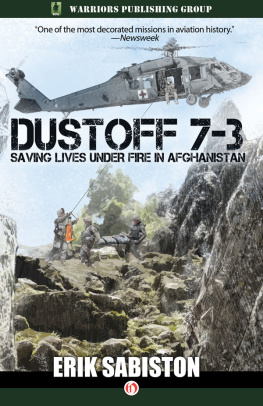Marines
Crimson Worlds: Book I
By Jay Allan
Ninety seconds to launch. Activating final lockdown procedures now. The mechanical voice of the assault computer was deafening as it reverberated in my helmet. Almost as loud was the metal on metal sound as the locking bolt on my armor clicked firmly into the steel frame of the landing craft. I was now securely held in place between the bolt and the sheer weight of my armor, I couldnt have moved a centimeter if my life depended on it.
Ive always been claustrophobic, and standing there held rigidly in place was starting to get to me. It was more than just the closed in feeling; to tell the truth I was scared to death. It was cold enough in the launch bay to make the metal of my armor uncomfortable against my skin, but I could still feel a thin sheen of sweat on my forehead. I kept trying to concentrate on the launch procedure and put everything else out of my mind. Thats what they teach you in training, but I can tell you its pretty damn difficult when youre bolted into a landing ship waiting to get blasted out into the upper atmosphere of an enemy planet. Especially the first time.
I guess everybody feels pretty much the same right before his first assault. Youre waiting for the launch you know is coming. Youve done it a dozen times in training, but this is for real. A few thousand kilometers down there are real enemies waiting to kill you. Ok, got to get that out of my mind right now, got to concentrate on the launch. Its a job, and Im a trained professional.
Actually, thats not really true. You dont have to concentrate on the launch. It would be a lot easier if you had something to do to keep busy, but the truth is everything is pretty much controlled by the ships computer until you hit ground. Nothing to do but stand here and count off the seconds. And think about what was waiting down there.
Sixty seconds to launch. Activating armor power circuits. There was a loud whine as the nuclear power plant on my back kicked in and fed juice into the circuits of my armor. I could see the green indicator light on the display above my visor indicating that all systems were fully powered and functional. Of course the indicator was of minimal importance the relevant flow of information was from the microprocessors in my suit to the ships assault computer.
It didn't make much difference anyway, not a minute before launch. All of the suits go through a full diagnostic check right before an assault, and any that dont pass 100% are red-flagged. No malfunction can slip through this failsafe procedure, at least theoretically. In actual practice it does happen occasionally, and when it does it usually means serious trouble. Any problem discovered this late was just that much tough luck for the wearer. There was no way to get you out of the harness in a malfunctioning suit of armor. Not in 60 seconds. And you can be damn sure they werent going to postpone an assault because one grunts armor was on the fritz. So the best you could do is stand there motionless and reflect on the greatly increased odds of your turning up KIA on this mission.
With the suit power activated there was at least some relief from the crushing claustrophobia. I still couldnt move, but the unrelenting feeling of more than two metric tons of dead weight around me was gone. The neural impulse sensors of the suit are tied into the servo-mechanical systems that move the armor just like a human body. Once on the ground and unlatched from the landing craft, you just move like normal. Walk, run, jump, whatever you just move and the suit goes along. Of course the armor is a lot stronger and faster than you are, and it takes some getting used to before you are comfortable running 80 kph and jumping 10 meters straight up. You can lift at least 500 kilos in your arms and you can crush an unarmored person like so much overripe fruit. If youre not careful you can kill yourself walking across the room.
I was pressed hard against the front of my suit as the Guadalcanals braking thrusters fired. Sub-orbital insertions can make for a pretty rough ride, as the ship executes a series of abrupt maneuvers to position itself for the launch. After about ten seconds of rapid deceleration we went into free fall. I had undergone intense conditioning during training and had been given the normal drugs and the standard 36 hours of intravenous nutrition prior to launch. I knew that it was almost physically impossible for me to get sick at this point, but that didnt stop the bile from rising at the back of my throat as we plunged toward the launch point.
When the dull roar of the ships engines died down there was an almost eerie quiet in the launch bay. There was a very faint buzz; I think it was coming from the lighting track on the ceiling. A couple of guys were talking softly to themselves. I thought I could make out a few words of a familiar prayer.
There was a red tint to everything from the battlestations lamps in the launch bay. The naval personnel had all left about 5 minutes prior to launch and we were alone - 2nd Platoon, A Company, 1st Battalion, 3rd Regiment, 1st U.S. Marine Division and ready to go.
The launch bay was sealed off from the rest of the ship, but there was still a heavy smell of burnt machinery in the air. The Guadalcanal had taken at least one hit on its approach. The sailors didnt seem to be concerned, so the damage must not have been too bad. Stunk up the place, though.
Thirty seconds to launch. Transferring life support function to marine armor. My visor clicked down automatically and there was a whooshing sound as my suit replaced the Earth-normal air of the Guadalcanal with the oxygen rich mixture designed to maximize alertness and physical endurance during combat operations. My armor was now 100% operational and could keep me alive, even in deep space.
With my suit sealed and the blast shield down over my visor I couldnt see or hear anything going on in the bay. But I knew from training that exactly 5 seconds after my visor clamped down, the bay of the Guadalcanal was depressurized to match the atmospheric density of the launch point. Five seconds after depressurization our suits were pressure coated with a special foam designed to absorb the intense heat of the atmospheric entry. Then the hatches would open.
The TX-11 Gordon atmospheric assault craft is designed to accept modular armor plating panels that effectively make it an enclosed ship rather than an open landing sled. However, the panels severely reduce its speed and maneuverability. The armor was effective against small arms fire, but was useless against the SAMs and other ground to air armaments that were the biggest threat during an assault landing. These weapons were best countered with the enhanced maneuver capabilities of the light, unarmored ship.
Ten seconds to launch. Good luck marines! The skippers voice had replaced the coldly mechanical tone of the assault computer. By tradition the ships captain delivered the final pre-launch announcement and wished the assault team luck.
I counted down in my head, five, four, three - I gritted my teeth and braced myself for the shock of launch two, one
I felt the jarring in every bone in my body as the catapult accelerated the assault lander down the launch track and out into the upper atmosphere of Epsilon Eridani IV, commonly known as Carsons World. By the time the assault ship cleared the hatch and fired its own thrusters, our velocity was 1,200 kph. The G forces caused by the launch would have killed an unprotected man, but with my fighting suit on I only lost my breath for a few seconds.
With the blast shield down I still couldnt see anything outside, but the monitors in my helmet activated automatically, feeding me all sorts of information altitude, velocity, armor skin temperature, heart rate, and a dozen other informational tidbits of questionable usefulness. I pressed the small button under my left forefinger and the deployment display was projected on the inside of my faceplate. I could see 50 tiny green dots in ten groups the entire platoon in ten landing craft. It looked like our formation was perfect (though as the junior private in the squad my only real concern was my location and that of my fire team leader). I knew the 1st and 3rd platoons were scheduled to launch 20 and 40 seconds after we did, with the company command and heavy weapon sections right after them. I had no reason to believe that they hadnt launched as planned, but their assigned position was considerably outside the range of my deployment display, so I didnt know for sure. I didnt need to know.







